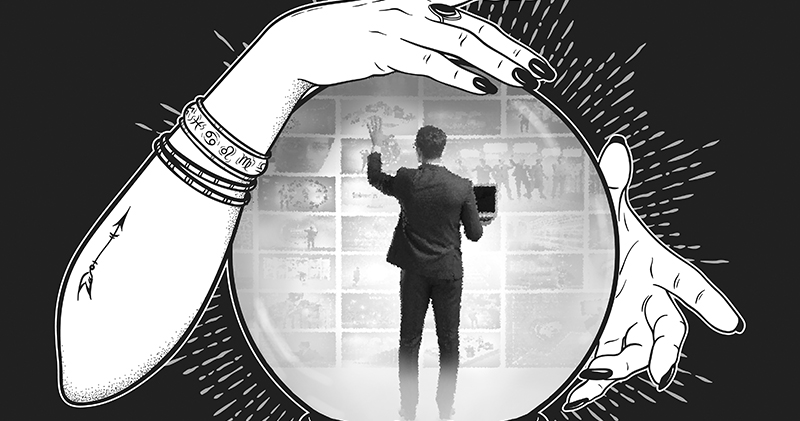UHDTV — A Tale of Three Standards
By the PHANTOM
Last issue I said I’d reveal how the revolution to yet another TV standard is set to play out. Some of what I’m going to say has not yet come to pass, thus the only guarantee I can make is that it won’t happen just as I say. So why don’t I tell it like it is going to be? I’ll tell you: I don’t know. But to explain the future, we must start in the past.
Once upon a time there was radio, which allowed one’s voice to be heard over great distances. Radio was revered by the people, but some wondered if it would be possible to transmit pictures over great distances. A way to do this was devised, and was called television. By the time of WW2, it was well known that in order to make television practical, there must be agreed-to standards to transmit it. In the colonies of America, there was established a committee of experts who were commanded to develop standards required to transmit pictures and sound over long distances. It was decided that the committee should be called the National Television System Committee, NTSC. After considerable strife, the committee settled upon a standard proposed by the Radio Corporation of America, RCA (RIP). This was an all-electronic system using vacuum tubes to capture images and then to display them. In those early days the pictures were black-and-white. In order to assure that all of the NTSC’s work would be accepted throughout the colonies, a government organization known as the FCC commanded that the work of the NTSC be standard throughout the realm.
In the early 1950s or so, it was proposed to add color. So a second NTSC was established to add color to the pictures. Now engineers, being very creative people, named it NTSC2. NTSC2 was commanded to add color to the signal in a compatible manner such that existing TVs would be able to display the color signal, albeit in black-and-white. The NTSC2 succeeded so well that their work survived until after the turn of the 21st century.
By the 1990s people were experimenting with even better pictures and sound. It was understood that yet more standards were needed to make the better signals available to the masses, so a third committee was formed to set the standards. It was decreed that the committee should be known as the Advanced Television Systems Committee, or ATSC. This committee was commanded to develop a system that was, once again, compatible with what the masses were already using. A number of standards were proposed and prototype systems built, and yet they were all found lacking: they didn’t meet the goal of a better picture very well.
At the last minute, a group of engineers brought forth a proposed system that DID display pictures with the quality expected. This system was digital, something not possible when NTSC2 did its work. But this digital system failed to meet one of the goals commanded to the ATSC, that the new system shall be compatible with the TVs in use by the masses. After considerable debate, it was agreed that the merits of the digital system were sufficient that the goal of a compatible system should be dismissed in favor of a system based on digital technology. So with the blessing of the FCC, a new system was developed and standardized by the ATSC.
But a practical way to transition from NTSC to ATSC had to be found, such that the masses didn’t have to dispose of their NTSC televisions too soon. The method agree to was to have the FCC provide each existing broadcast station with a second channel on which to transmit ATSC signals, while continuing to transmit NTSC on existing channels. New TVs were developed which could receive both ATSC and NTSC signals. These would be provided to the masses as they normally upgraded their TVs, and at some future date the NTSC transmitters would be turned off. Gradually the cable networks converted to the new transmission technology, with some changes intended to operate better over coaxial and fiber optic cables.
Now we come to present days. The NTSC transmitters have been turned off and the masses are viewing only ATSC signals (modified for cable where appropriate). The land should have been at peace. But no, engineers were developing yet another TV system which would improve yet again on the ATSC, using technology developed during the intervening years. Now unfortunately your purveyor of words has depleted his allotment for now and so he must leave you hanging onto the edge of your seat awaiting disclosure of the newer new television system.
 The Phantom
The Phantom
the.phantom@youwontfindmeanywhere.com
You never know when The Phantom is standing right beside you. Sometimes he is in a meeting with you or walking the floor at your favorite cable show. Sometimes he’s hanging with the suits and other times with the front liners. But be assured, The Phantom sees all, The Phantom knows all and, most importantly, The Phantom tells all.
Shutterstock




